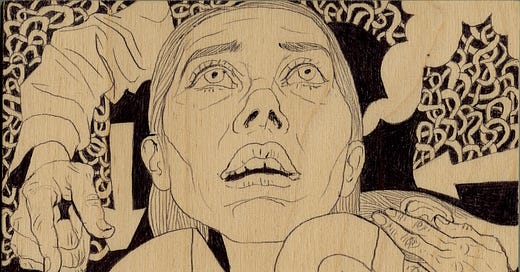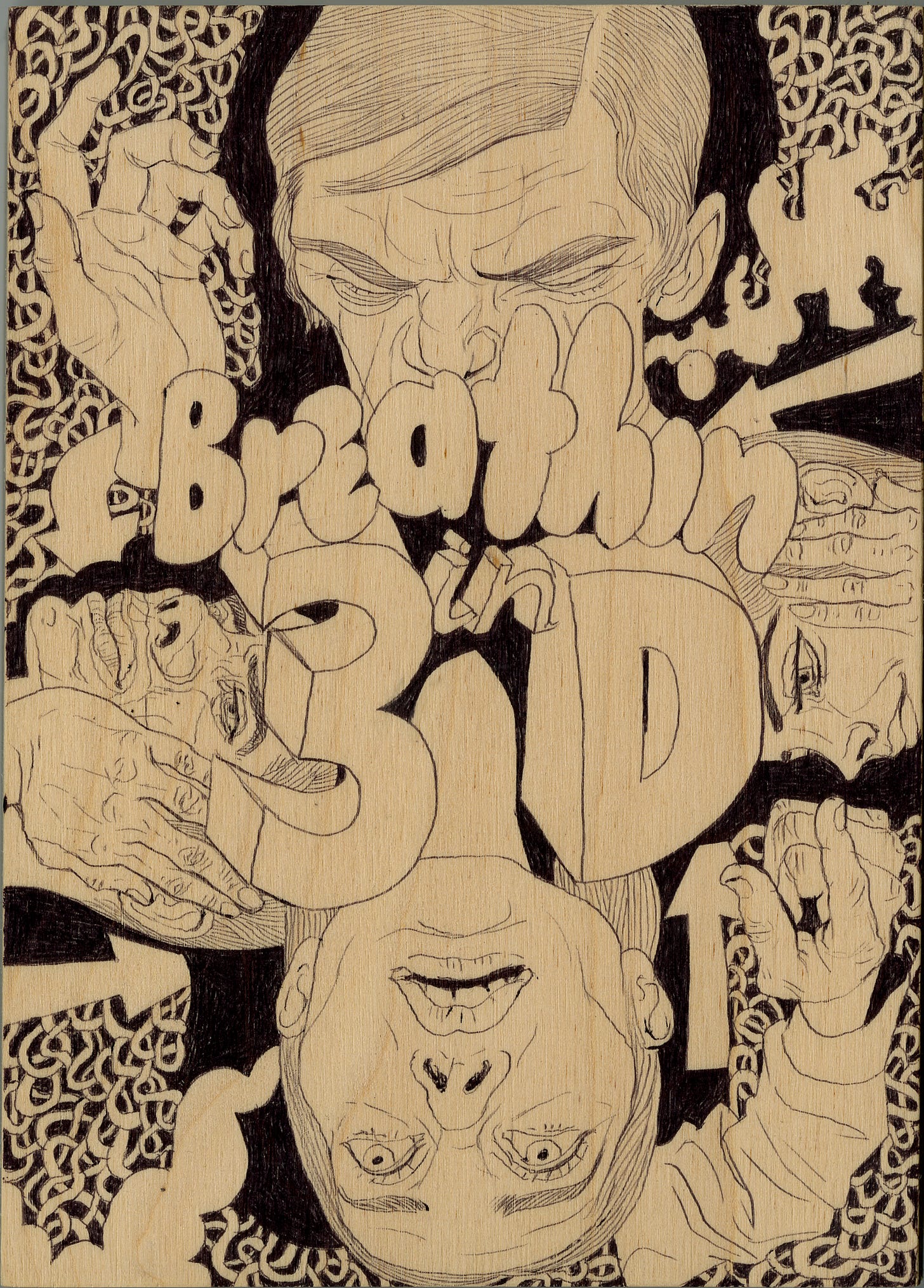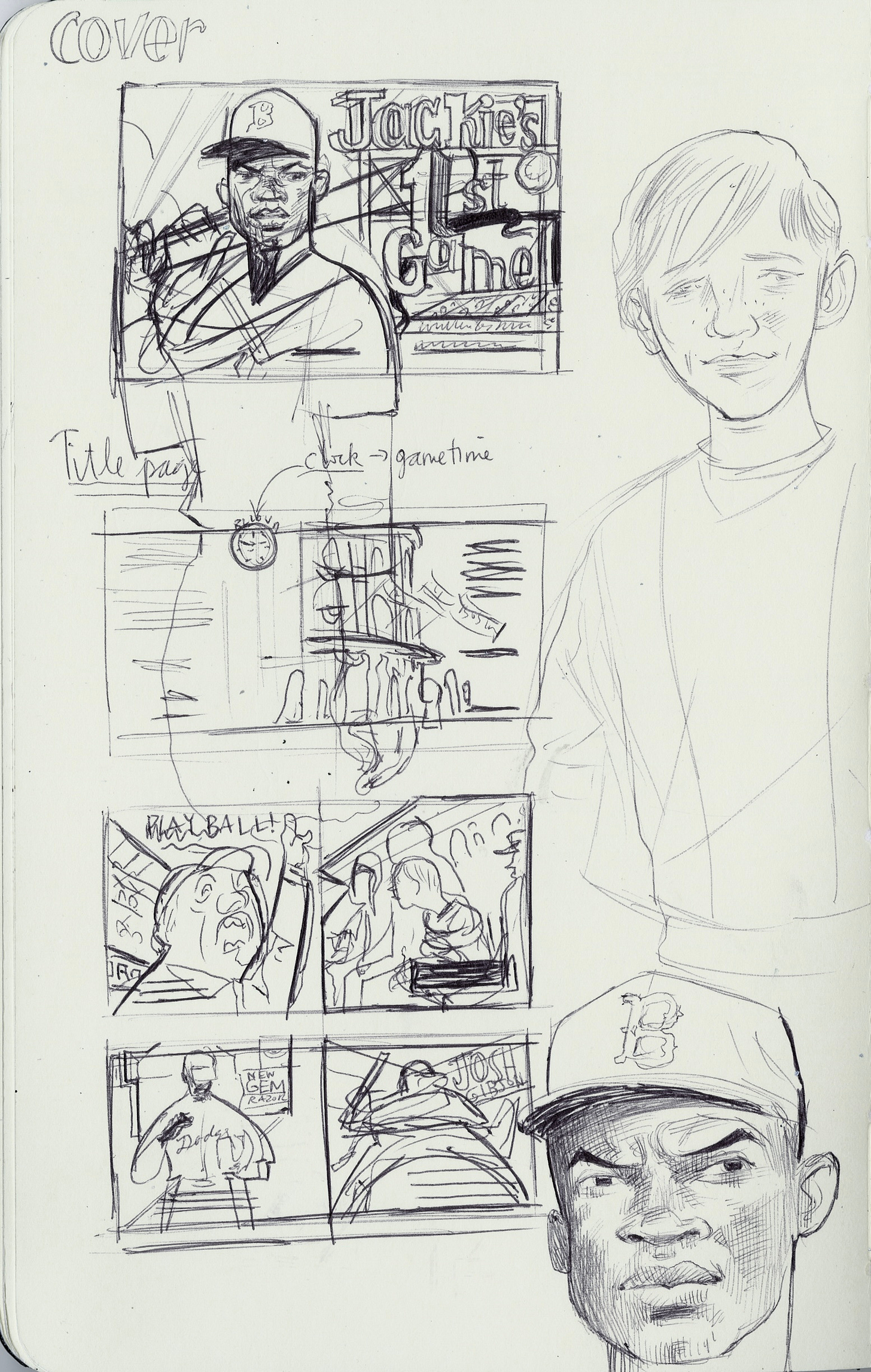I hate games with a passion, and I have never used a game controller in my life. This isn’t some moral high ground to stand on, it’s just how I tick, like travel anxiety—-I always worry about getting someplace late. I can attempt to pin the game dislike on being the youngest of 7 kids and some scar tissue from brotherly bullying (honestly my sister’s were more diabolical about games) but you can only blame your family for so much.
I love play, the practice of developing insight through frame breaking. Games just don’t offer me the same opportunity for pushing against the rules. I was on the subway this week and engaged in my play activity—sketching— while a man across from me maniacally tapped at his phone. I’m curious about the tapping activity, I suspect it is providing some dopamine or needed distraction from whatever ails him. But I just don’t get it.
What we choose to give our attention to and how that attention is paid back is expressed in this David Foster Wallace passage. Incredibly prescient here, as he died in 2008—before the rise of social media…
the technology is just gonna get better and better and better and better. And it's gonna get easier and easier, and more and more convenient, and more and more pleasurable, to be alone with images on a screen, given to us by people who do not love us but want our money… if that's the basic main staple of your diet, you're gonna die. In a meaningful way, you're going to die. David Foster Wallace
We can argue, with 16 years of distance from DFW’s words, if cultural rigor mortis has set in. The part of the passage that also struck me, “given to us by people who do not love us” is definitely true today. With text to generative A.I. especially, we have created a technology that mistakes the visual as the visible. Rewriting the artist Robert Irwin’s statement on photography…
The photograph A.I. captures everything a painting is not, it captures the image and not the presence.
We have created a technology to fill every one of our screens and it doesn’t care about us at all, is that just a reflection of who we are? What is a culture built on that replaces human engagement with attention capture and mindless getting through the day. Maybe more to the point is how belonging is being redefined. Our social groups are not built on mutual bonds and connection, but manufactured across networks of shared addiction through the algos and bots our ever watchful devices offer us. I don’t trust my iPad, I know it doesn’t have my best interests at heart—-it is actively preying on my worst impulses. It doesn’t love me.
When I play in the sketchbook I am inserting a visual response into the experience of my life. I am engaged in the flow of events and I have a trail of graphic images I can return to. I am making decisions on the page and can situate myself as a participant in the world I am experiencing. I am not being manipulated when I draw, I can decide the level of attention and the depth of engagement. Beyond just a practice of mindfulness, this form of play generates ideas through immersive thinking. The sketchbook extends my reach without guiding my hand or nudging the needs of the platforms that rule our drives.
I introduced the key approach I use in building play into my work in the studio this week. I argue about immersive thinking in the drawing studio, not directed at the students but at the culture arrayed around them. Their devices provide a passive immersion like a passenger on a train watching an incredibly vivid landscape—complete with music, talking, dance…an endless journey. Immersion in the studio begins with the white paper and a piece of black conté—it’s not a text we will mark on the paper, something much more open ended. I have them draw a box. Four lines making a square or rectangle. How do you get a 20 year old with a digital carnival barker waiting in their backpack excited about 4 black lines incised on a piece of paper? Slowly and arduously.
I suspect some of my students thought I was a raving lunatic as I talked about the ultimate challenge of the frame—- it’s the goalposts, the edge of the field, and the stadium all in one—- the 4 lines that change everything! They portray both a doorway into a room, and a window into depth and breadth. I knew that none of them could see what I was talking about, but I needed them to believe that as we worked they would begin to see these apparitions within those 4 lines. I don’t state the obvious that this is a language that everyone will at first be crap at doing. I like the carrot better, as I show them a variety of inspirational approaches to work within the frame. When an Illustration student is unsure of what is happening in a drawing class—they either rely on stylization (not very useful, misses the point of the exercise) or just draw what’s infront of them (atleast they are engaging with the form). Novel ideas need incremental steps, practice, and time to be integrated.
I understand my students fear of the drawn frame. Fear looms large for me when I’m writing this tumble of words, and I’m stuck——the blinking cursor—-a technological tic mocking you for not finding your words…that damn cursor again… tapping it’s impatient beat to my errant thought process. I am not a trained writer and pushing these letters along the sentence until they tumble onto the next line is the only way I can learn. I know the only way my students will learn is by drawing countless boxes and filling them with terrible and wonderful ideas.
So, if you haven’t drawn a 4 sided box on a piece of paper recently, go for it. Draw the game that offers endless opportunity to explore and no winners and losers only players.







I get it - sort of . . . Youngest of 6 - got sick of losing board games. I teach kids to make art fir a living. You inspired me to start carrying around a sketchbook again (900th time)! Love Your 4 lines metaphor play - might use that with the kids. Your sketching is strong - really happy Your not hooked on digital drawing - we will rise again as people begin feeling the LED burn more and more.